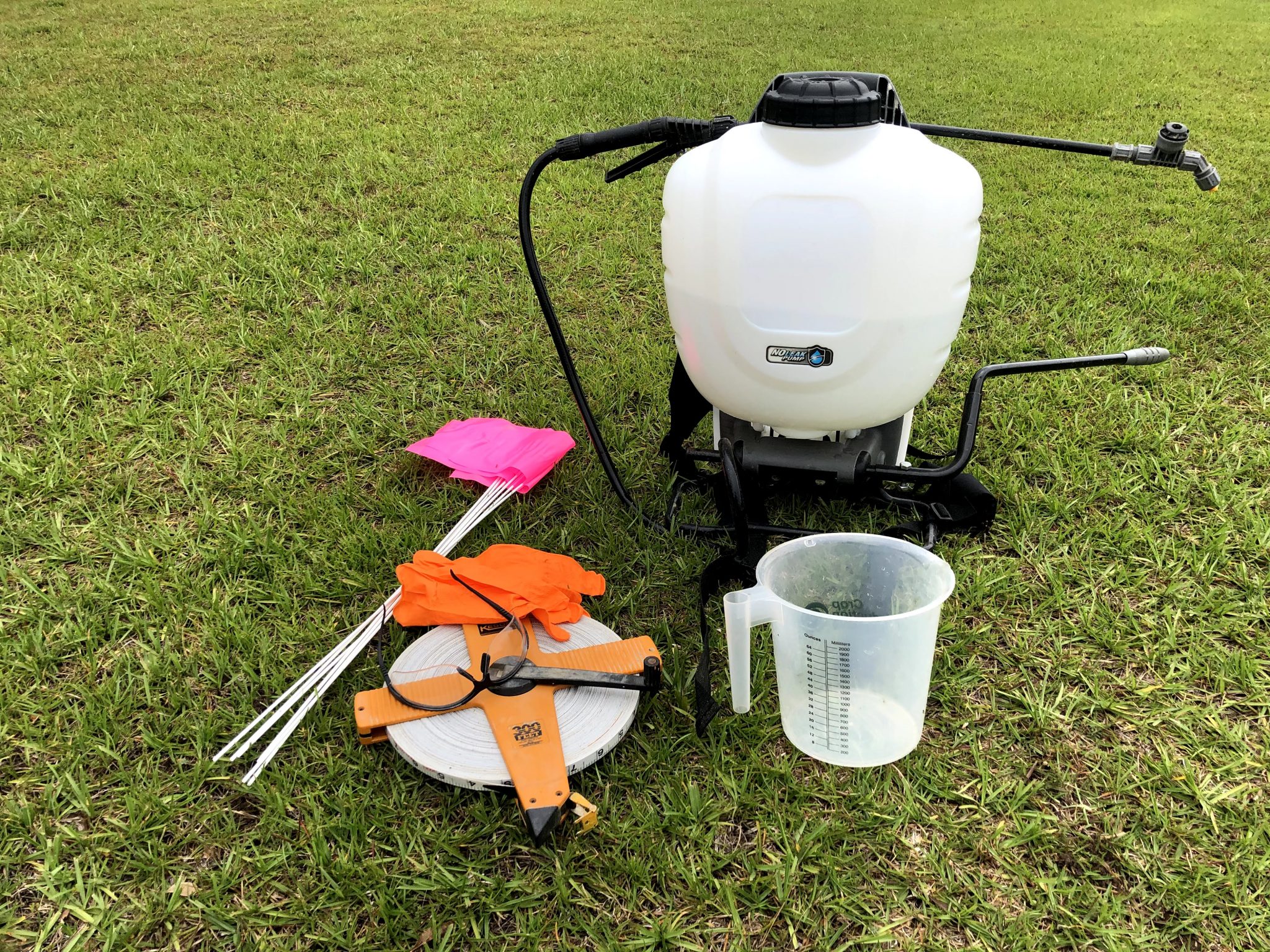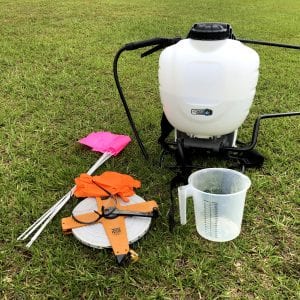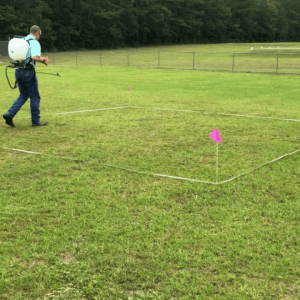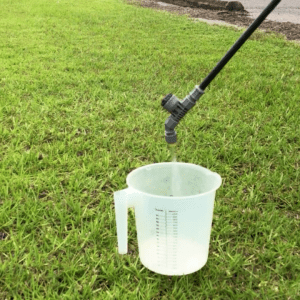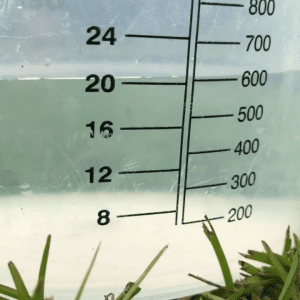Forestry & Wildlife

Herbicide use requires precision application. Learn how to calibrate and operate a backpack sprayer to avoid incorrect application of chemicals.
Effective chemical control of weeds or invasive plants requires uniform and accurate herbicide application. Underapplication could result in poor control, while overapplication will increase costs and undesirable injury, and could result in exceeding the rate allowed on the herbicide label.
To correctly apply herbicides on a per-acre basis using a backpack sprayer, it is important to calibrate your sprayer so that you know how much herbicide you are applying. There are several ways to calibrate your sprayer, but one of the easiest is the 1/128 calibration method. It is called 1/128 because there are 128 fluid ounces in a gallon, which simplifies the math nicely.
You can determine sprayer output in gallons per acre based on the number of ounces it takes to spray 1/128 of an acre. This is determined by measuring the time required to spray approximately 340 square feet (18.5 feet by 18.5 feet) and then measuring the volume in ounces that were sprayed in that amount of time.
Keep in mind that if you change your walking speed, pressure, or even the nozzle, you will need to recalibrate the sprayer. A change in any of the three variables will alter the amount of spray applied per acre.
What you will need (figure 1):
- a sprayer filled with clean water
- a stopwatch or smartphone
- a measuring tape
- boundary markers
- measuring container marked in fluid ounces
- Figure 1. Tools needed to properly calibrate a backpack sprayer
- Figure 2. Record the time it takes to spray the 1/128-acre plot. Repeat three times to get an average time.
- Figure 3. Spray water into a liquid measuring container for the average amount of time it took to cover the plo
- Figure 4. The total number of ounces captured is equivalent to gallons per acre sprayed.
How to Measure Sprayer Output in Gallons Per Acre:
- Measure an area equal to 1/128 of an acre. This is approximately 340 square feet, which is about 18.5 feet by 18.5 feet (figure 2). Mark the boundaries to clearly define the area. It is recommended that you choose an area that is comparable to the terrain you will be spraying. When getting started, however, you might set up on an asphalt or concrete surface until you are comfortable with your sprayer.
- Record the time required to spray the marked area. Spray at a comfortable pace and maintain constant pressure. For backpacks you may need some practice to become consistent in pumping as you spray. Repeat this process three times and calculate the average time required to spray the area.
- Use your sprayer to spray into a measuring container for the amount of time calculated in step 2 (figure 3). Be sure to maintain the same constant pressure as you did when you sprayed the 1/128 of an acre. Measure how many fluid ounces of water are in the container (figure 4). This amount is equivalent to your sprayer output in gallons per acre.
Example:
- An area 18.5 feet wide by 18.5 feet long is measured, and each corner is marked to delineate the boundaries.
- A water-filled sprayer is used to spray the measured area. A constant spray pattern and pressure is maintained. The time it takes to do this is measured. The process is repeated for a total of three times. The first time takes 29 seconds, the second time 25 seconds, and the third time 27 seconds, making the average time to effectively spray the measured area 27 seconds (29 + 25 + 27 / 3 = 27 seconds).
- The water in the sprayer is then sprayed into a measuring container for 27 seconds. The result is 20 ounces captured, making the sprayer output 20 gallons per acre.
- Taking this one step further, the herbicide prescription calls for 0.75 gallons per acre of glyphosate. With an output of 20 gallons per acre, the amount of glyphosate needed per 20 gallons is 4.8 ounces per gallon (0.75 / 20 = 0.0375 gallons or 4.8 ounces per gallon). The sprayer holds 3 gallons, therefore 14.4 ounces (4.8 / 3) of glyphosate is added to the tank along with 2.89 gallons of water.
Download a PDF of The 1/128 Calibration Method for Backpack Sprayers, ANR-2681.


